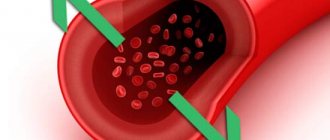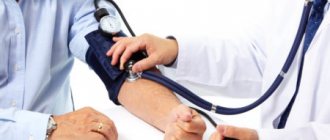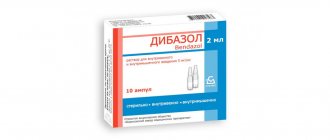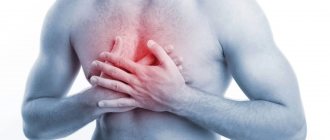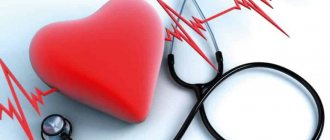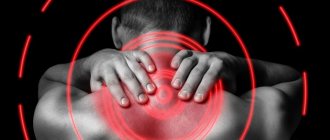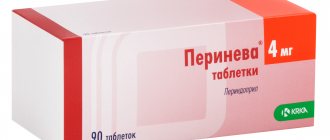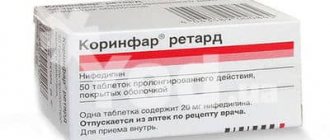Pharmacological action, pharmacodynamics and pharmacokinetics
The main therapeutic effects of the drug:
- Decongestant.
- Diuretic.
The drug inhibits the enzyme carbonic anhydrase, which affects water and sodium metabolism in the body. As a result, Diacarb helps eliminate edema of various origins, relieve an attack of acute glaucoma and compensate for the manifestations of a number of other conditions.
By participating in water-salt metabolism, the drug does not affect pH and does not disturb the acid-base balance. The duration of action is no more than 12 hours.
The maximum concentration of Diacarb is achieved in the blood 2 hours after its administration. It has a high ability to bind to protein structures of blood plasma. Able to overcome the placental barrier.
The drug is not metabolized in the body and is excreted in its original form by the kidneys within 24 hours.
Why do infants develop increased intracranial pressure?
Most often, this problem worries babies whose pregnancy had complications: severe toxicosis, entanglement in the umbilical cord, difficult childbirth can cause the development of this disease, namely ICP. These complications could be the reason that the child did not receive the necessary portion of oxygen while still in the womb; as a result, some brain cells cease to function properly, and cerebrospinal fluid is produced in excess and puts pressure on the brain with its volume. This is what causes frequent headaches, tears and poor sleep. Only the child cannot yet report this - therefore, parents, together with a doctor, need to conduct a series of studies to identify the exact cause.
A doctor can make an accurate diagnosis only after an ultrasound of the brain (this procedure can be performed on a child until the baby’s sac, the hole in the skull located at the top of the head, has become overgrown).
Indications and contraindications
The following is a list of indications for the use of Diacarb:
- Edema of any origin (with mild or moderate severity).
- Acute attack of primary glaucoma.
- Epilepsy (as part of complex treatment of the disease).
- Pathology of the respiratory system, characterized by the accumulation of carbon dioxide and bicarbonate compounds in the blood plasma.
- Mountain sickness.
The drug is strictly prohibited for use in the following conditions:
- Individual intolerance to one or more components of the drug.
- Acidosis.
- Diabetes mellitus type 1 and 2.
- Addison's disease.
- Acute or chronic liver and kidney failure.
- Pregnancy.
- Lactation.
- Decreased potassium concentration in the blood.
Interaction with other drugs
This drug is characterized by interactions with other drugs, which requires caution when prescribing complex treatment. If you are already taking any medication, your doctor should know about it.
- "Diacarb" has the ability to enhance the effect of certain medications. These include Ephedrine, anticoagulants, hypoglycemic drugs, folic acid antagonists.
- The concentration of phenytoin, muscle relaxants, and carbamazepine increases in the blood.
- Diacarb increases the side effects of taking Amphetamine, Atropine and Quinidine.
- The toxic effects of taking cardiac glycosides, Ephedrine, Carbamazepine, and non-depolarizing muscle relaxants increase.
- The simultaneous use of “Diacarb” and “Aminophylline”, “Theophylline” enhances the diuretic effect that the drug of interest to us has.
- A decrease in the diuretic effect is observed with the combination of Diacarb and ammonium chloride.
- A decrease in intraocular pressure is possible with the combination of Diacarb and anticholinergics, beta-blockers.
- The most dangerous is the combination of Diacarb and Aspirin (acetylsalicylic acid), especially with a high dosage of the latter drug. This combination can lead to anorexia, lethargy, tachypnea and even put a person into a coma.
Side effects and clinical manifestations of overdose
Short-term use of Diacarb can provoke the development of hypokalemia, paresthesia and limb cramps, muscle weakness, acidosis, visual and auditory disturbances, appetite disorders, itching, and an allergic reaction such as urticaria.
Long-term treatment with the drug causes drowsiness, dyspeptic syndrome, hemolytic anemia, leukopenia and agranulocytosis in some patients.
Overdose symptoms are similar to adverse reactions. Treatment is symptomatic. Immediate discontinuation of the drug and contact a doctor is necessary.
Diagnosis of dropsy of the brain
In infancy, a visual examination is sometimes sufficient to determine the nature of the pathology: the doctor, by examining the baby’s physiological parameters and listening to the parents’ complaints, can make a preliminary diagnosis at the initial appointment.
To clarify the disease in children with an open fontanel, including to identify pathology during intrauterine development, ultrasound is used to assess the degree of enlargement of the ventricles. Additional methods are:
- fluoroscopy;
- computed and magnetic resonance imaging;
- lumbar puncture, necessary for a detailed analysis of the cerebrospinal fluid.
A child with suspected hydrocephalus must be examined by an ophthalmologist or pediatrician; if necessary, concomitant diseases may require consultation with a cardiologist, surgeon, oncologist and other specialists.
Instructions for use Diacarb
The daily dosage and treatment regimen may vary. Features of admission depend on the presence of concomitant diseases, the age of the patient, as well as the type and severity of the underlying pathology.
For mild and moderate swelling, you should take 250 to 400 mg of the drug per day once.
For the treatment of an acute attack of glaucoma, adult patients are prescribed 250 milligrams of Diacarb every 4 hours. For pediatric patients, the dosage is calculated at 10-15 mg per kilogram of weight.
To prevent mountain sickness, it is recommended to take 500 mg of the drug 1-2 days before and during the ascent.
For patients with epilepsy, Diacarb is prescribed in a dosage of 250 to 500 mg per day for three days.
Prescription of Asparkam and Diacarb for infants
The choice of Asparkam dosage for an infant depends on many factors, so consultation with a doctor is required.
If Asparkam and Diacarb were prescribed to an infant, then their dosage, method of administration, time and frequency of doses should be determined by a qualified doctor, based on the individual case of the disease.
The dosage of Diacarb and Asparkam for infants, according to Komarovsky, depends on the following factors:
- Child's weight.
- The amount of cerebrospinal fluid.
- General background of the baby's health.
- The complexity of the disease.
Usually, babies under 12 months are prescribed a quarter of a Diacarb tablet once a day, and Asparkam in three doses a day, the dosage of which must be determined by a doctor. The tablets must be crushed to a powder and diluted with a few drops of water and poured into the child’s mouth. After taking it, it is recommended to put the baby to the breast to remove the bitter taste of the tablets.
For hypokalemia (lack of potassium in the baby’s blood), doctors prescribe Asparkam intravenously. At the mother's choice, this can be a drip method or a jet injection.
To avoid overdose, the drug is diluted with a 5% glucose solution and administered very slowly.
Reviews about the medication
Reviews from patients and doctors about the drug Diacarb are very different, both positive and negative.
Most patients note the high effectiveness of the drug, as well as its affordable cost.
Some patients speak negatively about Diakarb. For some it did not help at all, but for others it caused undesirable reactions, due to which they had to stop taking the drug. Most often, patients experience severe muscle weakness and cramps as a result of hypokalemia.
On thematic forums, the question often arises about the possibility of treatment with Diacarb during pregnancy and lactation. Currently, medical professionals do not prescribe it to expectant and nursing mothers, since there is no reliable data on the safety of its use in this category of patients.
What is Hypertension-hydrocephalic syndrome (HHS)?
Hypertensive-hydrocephalic syndrome (HHS) is caused by excessive accumulation of cerebrospinal fluid (CSF) in the ventricles of the brain and under the meninges, resulting from obstruction of outflow, excessive formation and impaired reabsorption of cerebrospinal fluid. This is one of the most common syndromic diagnoses in pediatric neurology, especially in young children with perinatal encephalopathy (PEP). It should be noted that the term “hypertensive-hydrocephalic syndrome” is a concept used exclusively in Russia. The causes of HGS can be: unfavorable course of pregnancy and childbirth, hypoxic-ischemic brain damage, deep prematurity, intracranial hemorrhage and intrauterine infections, congenital malformations of the brain, neuroinfections. Research methods to judge the level of cerebrospinal fluid pressure are very limited. Currently, the only reliable and relatively accessible of them is to perform a lumbar puncture of cerebrospinal fluid (CSF) to measure CSF pressure, which is a diagnostic criterion for this pathology. HGS can be either one of the manifestations of hydrocephalus or many other neurological diseases. The diagnostic criteria for HGS include clinical symptoms that indirectly indicate an increase in cerebrospinal fluid pressure and dilation of the ventricles of the brain.
What is the prevalence of hydrocephalus? According to official statistics, up to 70% of newly born children suffer from an obvious (hydrocephalus) or latent form (hypertensive-hydrocephalic syndrome) of this disease.
What is the reason for the widespread incidence of hydrocephalus?
- Weakness of the nervous system of children born from parents who grew up in environmentally unfavorable conditions.
- A large number of “saved” premature babies.
- Frequent use of surgical delivery, which also contributes to the development of hydrocephalus.
- A busy schedule of vaccinations up to 1 year of age contributes to the exacerbation of latent hypertensive-hydrocephalic syndrome.
Early diagnosis (ultrasound, electropuncture) also helps to identify hidden forms of the disease hydrocephalus of the brain. There are many more reasons that can be found. But the fact remains: it is necessary to identify and treat hydrocephalus without waiting for exacerbations of the disease and complications.
What are the manifestations of hydrocephalus? In children under 1 year of age: increased excitability, “unreasonable” crying, sleep disturbance, frequent regurgitation, throwing the head back in sleep, increased muscle tone (hands held in fists, legs resting on toes and crossed), weak support with legs, lack of step reflex, delayed motor and mental development. In preschool children: hypermobility, aggressiveness, hysterical manifestations, stuttering, enuresis, strabismus, frequent colds, delayed psycho-speech development (poor vocabulary, impaired diction, difficulty constructing complex sentences). In schoolchildren: nosebleeds and headaches, memory and concentration are reduced, disinhibition and neuroticism are noted, learning school material is difficult: they complete tasks slowly, make a large number of mistakes, their hands get tired quickly, their handwriting is not even, they read slowly and poorly assimilate the material they read, find it difficult to write a competent story.
What are the worst complications of hydrocephalus? CONVISIONS, CEREBRAL PALSY, MORTONITY.
What factors cause exacerbation of hydrocephalus? Any stress on the body (viral infections, stress, mental and physical fatigue, concussion, vaccinations) can lead to an exacerbation of increased intracranial pressure - especially a combination of these. For example: studying at the gymnasium + flu + stress can lead to exacerbation of hydrocephalus, headaches and a decrease in academic performance and aggressiveness.
What to do if your child has any manifestations of hydrocephalus? Promptly seek advice from the children's department of neurology and reflexology at Reatsentr to clarify whether the child needs to be examined and treated.
